

Eye problems don’t always announce themselves. Book your thorough eye exam with us. Your vision and eye health will be assessed in detail using advanced eyecare technology.













Eye problems don’t always announce themselves. Book your thorough eye exam with us. Your vision and eye health will be assessed in detail using advanced eyecare technology.










At Blackbox, we know plumbing.
Our standards are high and our work ethic is second-to-none. We’re approachable, professional and great at our job. Basically, we do what we say we’re going to do, when we say we’ll do it. We pride ourselves on going the extra mile so be it a quick fix or major install we’ve got you covered – every time.
Proudly serving Auckland with reliable residential and commercial plumbing solutions.
OUR DIRECTOR Matt
Matt’s like that best friend you can call on for advice. Ready to jump in and help anyone. He’s not one of those grumpy tradies where everything seems too hard, or they use complex trade related words to make jobs sound complicated and expensive.
He loves being outdoors, luckily a lot of plumbing jobs require him to be outside working with his hands. He set up Blackbox to build a solid business that would grow, and it is growing through hard work and happy customers.
NEED A PLUMBER? Contact us!
¼ 0800 425 225
º info@blackboxplumbing.co.nz
Ô www.blackboxplumbing.co.nz
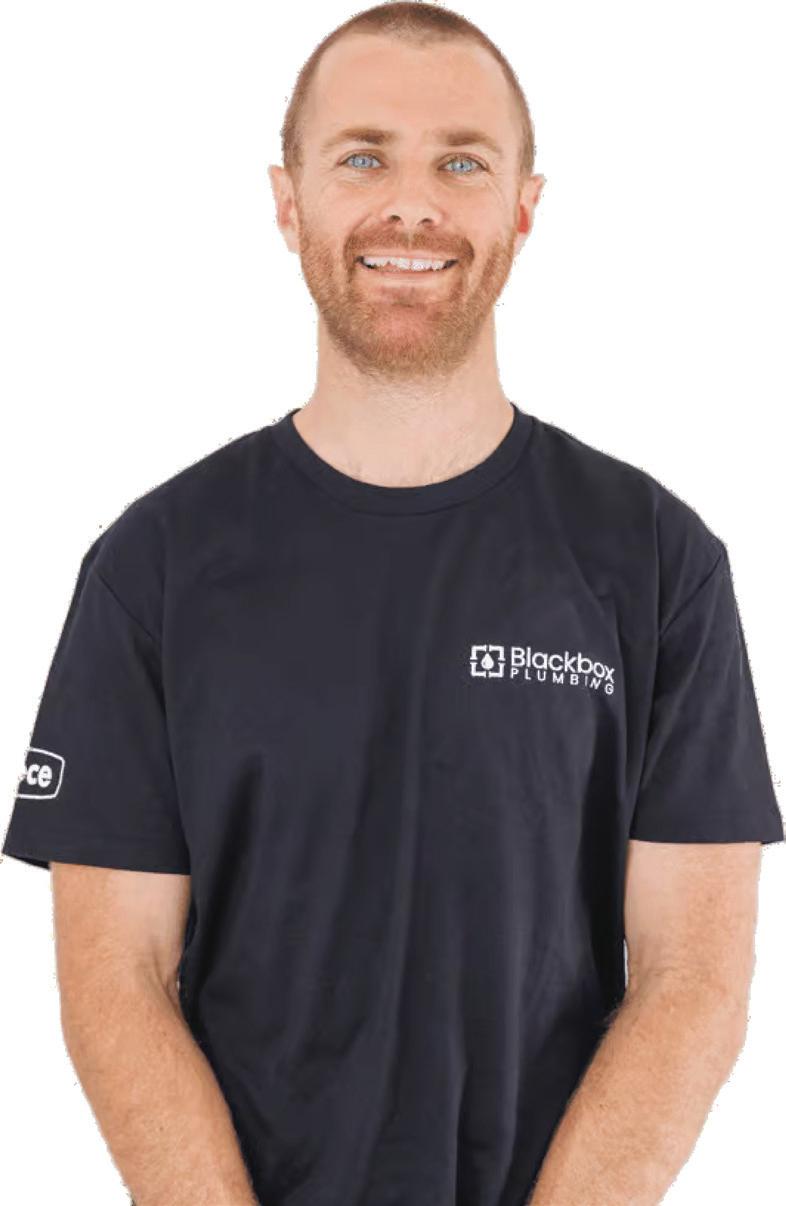

Welcome to this edition of Plusliving, where we continue our mission to inform, empower, and inspire New Zealanders aged 50 and over. This issue marks the launch of our new section, “Live Longer, Live Better” — a space dedicated to practical ways to boost health, movement, and mindset as we age.


Inside, you’ll find fresh insights on Japanese walking, Harbour Sport’s Active for Life programme, and even the science behind spontaneity and how it supports brain and emotional health. It’s all about sustainable habits that make a meaningful difference — at any stage of life.
We also dive into financial resilience, digital safety, and shifting cultural norms (including a little love for the muchdebated dad bod).
Enjoy!
Group Editor 021 676 320 | stuart@academgroup.co.nz



Embracing the
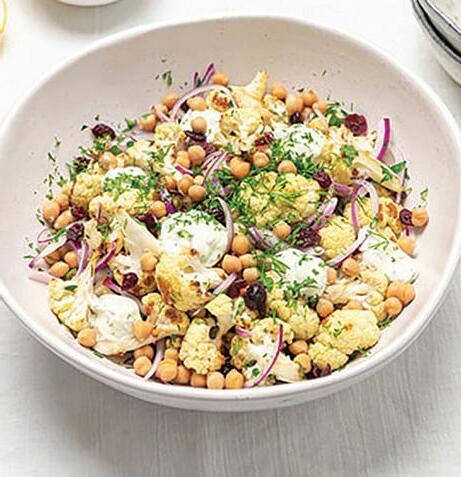


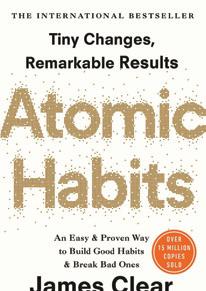
Our

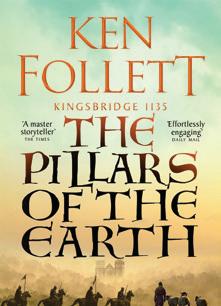


Publisher: The Job Agency Ltd 38 Lowe Street, Addington, Christchurch 8011
Managing Director: Gary Collins
GM of Operations: Kylie Palermo
Sales Manager: Angela Elley (03) 961 5184 | sales@markat.co.nz
Art Director: Jarred Shakespeare (03) 961 5088 | jarred@markat.co.nz
Design: Jessica Ann
Product Coordinator Manager: Amber Mundy (03) 961 5075 | amber@markat.co.nz
Accounts: (03) 961 5050 | accounts@markat.co.nz
Welcome to Plusliving – the magazine dedicated to living well and ageing gracefully in modern society. Aimed at the 50+ age group, you’ll find articles covering all aspects of contemporary life, including physical health and wellbeing, mental health and acuity, home life, working life and finances, technology, travel, self-improvement and more. Our aim is to provide information anyone can use, on any given day, so you can get more out of life. Disclaimer
This publication is provided on the basis that The Job Agency Ltd is not responsible for the results of any actions taken on the basis of information in these articles, nor for any error or omission from these articles and that the firm is not hereby engaged in rendering advice or services. The Job Agency Ltd expressly disclaim all and any liability and responsibility to any person in respect of anything and of the consequences of anything done, or omitted to be done, by any such a person in reliance, whether wholly or partially upon the whole or any part of the contents of this
Contents Copyright 2020 by The Job Agency Ltd. All






By Jamie Quinn

Upgrade your living room with this mid-century modern chair. Its sleek silhouette, subtle curves, and tapered wooden legs add a touch of chic sophistication while creating a light and airy feel in your space.
RRP $1099.00 www.targetfurniture.co.nz

Elevate your interior design with the luxurious Sophia Ribbed Faux Fur Throw in chocolate brown. This cosy blanket is the perfect accent piece to add a touch of elegance and warmth to your living room.
RRP $149.90 www.bedbathandbeyond.co.nz



Breathe new life into your living space with the Hadley Check Cushion. This fun accent piece is the perfect pick-me-up for any sofa or armchair in need of a refresh. This beautifully crafted pillow features a classic tufted check pattern and a colour palette that blends seamlessly with most décor.
RRP $99.99 www.adairs.co.nz
DISCLAIMER: Please note prices listed here are recommended retail pricing. Prices are subject to change at the discretion of the seller. The information on this page is for information purposes only. The Job Agency T|A Markat assumes no liability or responsibility for any inaccurate, delayed or incomplete information, nor for any actions taken in reliance thereon.
This sleek and stylish lamp features a contemporary design that will instantly elevate the ambience of any room. Its soft, diffused light creates a warm and inviting atmosphere, perfect for illuminating your favourite reading nook or casting a gentle glow over your living space.
RRP $42.00 www.kmart.co.nz

This full-length mirror features a unique, wavy design that adds a quirky personality to any room. The soft curves of the mirror frame contrast beautifully with straight lines, creating a visually interesting look. Featuring a plush velvet frame in rich chocolate brown, this mirror is sure to be a conversation starter!
RRP $199.99 www.onceit.co.nz


We're a specialist civil contractor committed to building New Zealand's future through solid relationships with our clients.
LET’S TALK ABOUT YOUR PROJECT
Motu Bradley 021 890 883
Hakam Dirki 027 338 2846
1 Comrie Place, Pukekohe, Auckland admin@corecivil.nz www.corecivil.nz
100% Maori owned construction business that is based on fostering strong relationships and building challenging projects for New Zealanders. We deliver high-quality civil construction projects across Aotearoa. From complex infrastructure developments to environmentally sensitive works, our portfolio showcases a diverse range of projects that demonstrate our ability to deliver results that benefit our communities.
• Drainage • Earthworks • Civil Works • Utilities • Residential Works
• Heavy Haulage • Truck Hire • Landscaping
New Zealand is facing mounting financial pressure as its population ages, with an increasing number of people over 65 and a declining workforce to support them.
Experts warn that without careful, gradual reforms to retirement income policies, rising living costs and insufficient savings could leave many older Kiwis financially vulnerable.
Our ageing population
Financial hardship awaits New Zealand if the retirement income policies remain unchanged, an NZIER report warns. The Retirement Commission-backed report found that falling birth rates and the rising life expectancy mean the workforce will shrink despite the expectation that Kiwis will work beyond 65.
“While the number of people under 40 will remain the same as today, the number of people over 40 will increase by a third, and the number of people over 65 will increase by about a half,” senior economist and report author Adrian Katz said.
He says migration will become the main driver of population growth. “With the global population aged 65 and over expected to increase from 10% in 2025 to 16% by 2050, the demand for migrants will rise. New Zealand’s migration levels will depend on its ability to attract skilled workers amid growing competition.”
A smaller workforce means an increased tax burden for younger New Zealanders, which could lead to rising taxes, reduced public services, and growing debt.
“Whatever the approach, moving along the spectrum from pay-as-you-go towards savings-based creates a double burden on the working-age population, who must pay for current retirees as well as pre-fund the increased costs of future retirees. The costs of transition will rise as the population ages.”
He says that people need time to adjust and that retirement income policy settings significantly impact people’s consumption and savings decisions throughout their lifetimes, so changes should be gradual and announced well in advance. “Thoughtful,
By Ben O’Connell


Rising living costs are compounding retirement challenges. The New Zealand Seniors Quality of Life Report 2025, conducted in partnership with consumer research group MYMAVINS, surveyed over 500 Kiwis aged 50 and older. It found that 76% of seniors are affected by rising living costs, with more than half reporting that these pressures negatively impact their quality of life.
Everyday essentials such as groceries (52%), transport (40%), and travel (49%) are increasingly difficult for older Kiwis to afford. Many have cut back on social activities (34%) or reduced social interactions (30%) due to financial constraints, which increases the risk of isolation and reduced wellbeing.

The report also highlights healthcare concerns. Over half of seniors surveyed cited healthcare costs as a major financial worry, and nearly half reported long wait times for specialist care or hospital procedures, averaging 108 days. Some seniors are even delaying medical care due to costs, a trend that poses longterm risks to their health.
Karen Billings-Jensen, Chief Executive of Age Concern New Zealand, said the findings highlight the challenges facing older New Zealanders. “Cost of living, long-term financial security, health concerns, housing, and social connection are all critical factors influencing quality of life for older people.
“It's concerning that some older people were managing rising healthcare costs by cutting back on social activities or, more worryingly, cutting back on food and grocery expenditure."
Of those surveyed, 70% also felt KiwiSaver should be compulsory, and 68% believed employers should increase their contribution rates.

The challenges are particularly acute for self-employed New Zealanders, who often face a two-tier retirement system. According to a joint report by Te Ara Ahunga Ora Retirement Commission and Hnry, only 44% of self-employed Kiwis contribute to KiwiSaver, compared with 78% of employees, and many receive no government contributions due to irregular incomes. Almost one in five reported not saving at all.
“Self-employed New Zealanders make up a growing share of our workforce, yet they are being left behind when it comes to retirement savings,” Retirement Commissioner Jane Wrightson said.
“Without meaningful reform, we risk seeing hundreds of thousands of people reach retirement without sufficient financial security. More retirees will rely heavily on government transfers, creating a future fiscal burden.”
The report recommends reforms including automatic enrolment with opt-out options, flexible contribution rates, enhanced incentives for low-income earners, and targeted financial education. Wrightson emphasised that “retirement savings must work for all New Zealanders, regardless of how they earn their income.”



The Your West Innovation & Support Funds. 54 organisations have been granted their share of $1.1M from
While the world becomes more and more obsessed with high-intensity workouts, a gentle yet highly effective approach to fitness is gaining popularity.
Known as Japanese walking, this structured method is a simple, science-backed way to improve cardiovascular health, build strength, and support mental wellbeing.
Unlike traditional walking routines that emphasise distance or step count, Japanese walking, also technically referred to as interval walking training (IWT), is based on alternating periods of brisk walking with periods of slow recovery walking. Originating from Japan and developed by Dr. Hiroshi Nose at the Shinshu University Graduate School of Medicine, this method was specifically studied among people aged 40 to 75. Its results have reportedly impressed researchers and public health experts alike.
Japanese walking is a timed method of walking that alternates between three minutes of fast-paced walking and three minutes of slower walking, typically over a 30-minute session. The brisk walking phase should be vigorous enough to raise your heart rate to around 70-85 percent of your maximum. During this phase, you should feel slightly breathless, able to speak a few words, but not hold a conversation. Then comes the slow-paced interval, giving your body a chance to recover.
The cycle is repeated five times to complete the full session, and ideally performed four times per week to gain the full benefits. Unlike continuous walking, which maintains a steady pace, the interval structure of Japanese walking is key to its effectiveness. It creates periods of physical challenge followed by rest, which helps the body adapt and grow stronger.
One of the most appealing aspects of Japanese walking is that it has significant health benefits without putting unnecessary strain on joints, muscles, or the cardiovascular system. As we age, finding a form of exercise that is both safe and effective becomes more and more important, and this method ticks both boxes.
Studies show that Japanese walking improves aerobic capacity, which is a major predictor of longevity and heart health. Even adults in their seventies showed marked improvements after regular training using this method.
The brisk intervals help build leg strength, boost muscular endurance, and improve balance. These are key for preventing falls, one of the leading causes of injury and loss of independence among older people.
Due to its interval nature, Japanese walking increases calorie burn and stimulates the metabolism more effectively than steady walking. Over time, this can support a healthier weight and body composition.
The rhythm of the intervals, paired with fresh air and gentle movement, makes Japanese walking an effective way to reduce anxiety and lift mood.
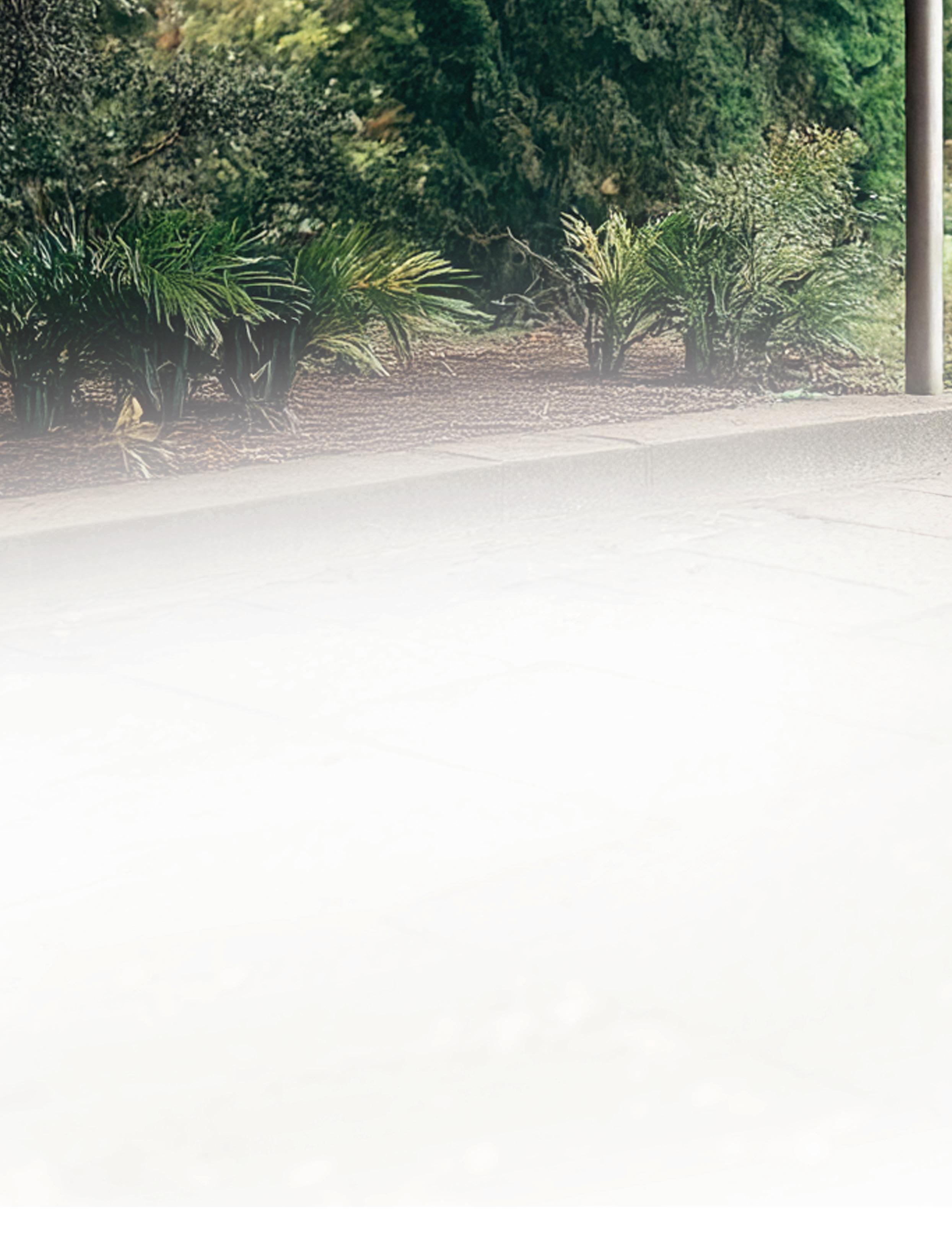


Many people still cling to the idea that 10,000 steps a day is the magic number for health. But that figure actually originated from a Japanese marketing campaign in the 1960s. Modern science suggests that walking quality, not just quantity, matters more.
A recent Japanese study found that participants who engaged in interval walking saw greater health benefits than those who simply walked continuously for the same amount of time. So while total daily movement remains important, integrating intentional bursts of intensity makes a real difference.
If you are new to structured walking or haven’t exercised in a while, it's best to ease into this method gradually. Begin with short sessions, perhaps 20 minutes, and build your way up to the full 30-minute routine.
Use the “talk test” as a guide. During the brisk phase, you should be able to talk, but not sing or hold a full conversation. In the slower phase, you should feel comfortable and relaxed, allowing your body to recover.
No special gear is needed beyond comfortable walking shoes and suitable clothing. Choose flat, safe routes like walking tracks, parks, or quiet suburban streets. A timer or walking app can help you track your intervals until the rhythm becomes second nature.
As always, check in with your GP before beginning any new exercise programme if you are unsure, especially if you have a history of heart issues, joint problems, or are currently managing a health condition.


Japanese walking is a timed method of walking that alternates between three minutes of fast-paced walking and three minutes of slower walking, typically over a 30-minute session.
Incorporating Japanese walking into your weekly routine could become one of the most sustainable and enjoyable health investments you’ll have made in recent years. Beyond the physical benefits, this method also promotes discipline, mindfulness and routine, qualities that massively contribute to overall wellbeing in retirement.
So the next time you’re out for a stroll, consider giving this walking method a try. With its roots in scientific research and showing results of greater strength, balance, and longevity, Japanese walking may be the perfect step forward.
Graeme was active and independent, enjoying fishing with his son and catch-ups with mates at the RSA. But after pneumonia and heart surgery, everything changed. Following a long hospital stay, he returned home unable to walk or manage daily tasks.
“I was worried I’d never live alone again,” Graeme says. “Then Visionwest arrived. I honestly couldn’t have survived without them. They were a lifesaver, absolutely brilliant. They cared for me, fed me, and got me through some really tough times.”
“At
first, I didn’t want to accept help. But I couldn’t stay at home without it. They do the things I can’t manage anymore, and that’s what keeps me independent.”
As he regained strength, Graeme faced another setback. He fell into an unmarked hole and broke his femur in four places, leading to three more months in hospital and ongoing pain.
Now with limited mobility, Graeme receives support from Visionwest Support Workers with chores, medication, shopping, and check-ins.

“I honestly couldn’t have survived without them. They were a lifesaver, absolutely brilliant. They cared for me, fed me, and got me through some really tough times.”
“At first, I didn’t want to accept help,” he shares. “But I couldn’t stay at home without it. They do the things I can’t manage anymore, and that’s what keeps me independent. Someone helps with the housework. Someone makes sure I’ve taken my medication. Someone checks in later in the afternoon. And someone does my shopping. I just can’t walk a supermarket anymore, it’s too far, too painful.”
Grateful for the care he’s received, Graeme proudly recommends Visionwest to others.
“I reckon Visionwest is so good, I’ve told about 15 mates at the RSA. Most of us are in our 70s, and I tell them, ‘Mate, if you’re finding things tough and need help at home, you’ve got to go with Visionwest. They don’t just show up, they really care.’ I’d buy a drink for anyone who donates to them. They’ve changed my life.”


By Jonathon Taylor
In today’s structured, schedule - driven world, spontaneity might seem like a luxury — or even a distraction.
But research shows that embracing the unexpected may actually be good for your health. Far from being frivolous, spontaneous behaviour has been linked to enhanced mental wellbeing, greater emotional resilience, and even improved cognitive functioning.
Clinical psychologist Katina Bajaj explains that stepping outside of rigid routines can offer powerful psychological benefits. “Surprise and novelty can actually be therapeutic,” she says. “The more spontaneous and creative experiences we have, the happier, fulfilled, and even successful we become.”
Spontaneity, especially when it involves trying new activities or breaking away from predictable habits, can activate areas of the brain associated with learning, problem-solving, and memory. In particular, it promotes divergent thinking — a mental process essential to creativity and innovation.
Even our perception of time is influenced by how we engage with life. Neuroscientist David Eagleman has noted that new and unplanned experiences force the brain to process more information, which can make time feel richer and more meaningful. This contrasts with the sensation of time “flying by” when life becomes a series of repetitive tasks. In this sense, spontaneous experiences not only enrich the moment but also help us feel more present and aware.
On a neurochemical level, spontaneity can trigger the release of dopamine, a key neurotransmitter that plays a central role in motivation and mood. These brain responses help explain why impromptu decisions — whether it’s a last-minute coffee with a friend or an unplanned walk in the park — often leave people feeling refreshed, energised, and emotionally uplifted.
There’s also growing evidence that spontaneity supports emotional resilience. Dr. Xiangyou “Sharon” Shen, a researcher at Oregon State University, has studied the impact of playful spontaneity during periods of intense stress, such as the COVID-19 pandemic.
Her research found that people who embraced a playful and spontaneous outlook — what she calls “lemonading”— were more optimistic, adaptable, and creative in how they approached challenges. “They imagined future possibilities with greater optimism,” Shen notes, and were better equipped to “turn lemons into lemonade.”
Further reinforcing this, studies in psychodrama and personality psychology have shown that spontaneous behaviour correlates positively with well-being and negatively with anxiety, depression, and obsessive thinking. Researchers suggest that individuals who allow themselves to act authentically and flexibly in the moment are more likely to experience higher selfesteem, better coping skills, and greater life satisfaction.
Spontaneity, then, is not about carelessness or a lack of structure — it’s about allowing space for curiosity, play, and meaningful connection. When embraced mindfully, it becomes a powerful tool for enhancing emotional health, building resilience, and adding richness to everyday life.
As Bajaj puts it, “It’s in those moments of freedom — when we allow ourselves to explore without a plan — that we often find the most joy.”
Ranfurly Village is a senior living community in central Auckland, offering independent living, assisted living, and care accommodations that provide a comprehensive range of care to support your needs.

Apartments selling from $650,000.
539 Mount Albert Road, Three Kings, Auckland
ranfurlyvillage.co.nz | 09 625 3420
For decades, ColorCote has been redefining what it means to build with New Zealand with steel and aluminium. From humble beginnings in 1917, manufacturing aluminium venetian blinds, the company has evolved into the country’s leading supplier of pre-painted steel and aluminium for roofing and cladding.
With a product range engineered to withstand New Zealand’s famously diverse and challenging climates, ColorCote has built a legacy of durability, innovation and trust.
Today, ColorCote offers a specialised lineup of solutions designed to meet varying environmental demands. ZinaCore is ideal for moderate climates, delivering both strength and value. For coastal areas where salt-laden air corrodes typical materials, MagnaFlow has superior resistance to marine conditions. And for the most extreme marine and industrial settings, AlumiGard, made from marine-grade aluminium alloy, stands up to the toughest tests.



But ColorCote is not just about products; it is about purpose. The company’s recent brand refresh opens up a renewed commitment to its founding values, embodied in a new guiding principle: Steel Made Better. This phrase captures not just what ColorCote does, enhancing steel and aluminium with protective coatings and vibrant colour, but also who they are and how they work.
As Marketing Lead, Jasmin Pakura said, “There’s no such thing as coloured steel; it’s all colour coated. That’s what makes it better.” This insight underpins ColorCote’s entire mission: to make steel not only stronger and longer-lasting, but also smarter and more sustainable. The rebrand goes beyond visual changes. It has also introduced a modernised logo, a refreshed visual identity, and a user-focused website, which launched on May 26th. These updates are designed to reflect the company’s role as an industry leader while providing an improved digital experience for customers, specifiers, and partners alike.
Sustainability is another fundament of ColorCote’s approach. All ColorCotes products come with Environmental Product Declarations (EPDs), having full transparency on environmental impacts. This company has also earned GreenRate Level A certification from GreenTag, which is endorsed by the New Zealand Green Building Council. This top-tier rating affirms ColorCote’s ongoing commitment to environmentally responsible manufacturing and design.
But Steel Made Better means more than performance and compliance; it’s also about people and community. ColorCote is dedicated to creating an inclusive and supportive workplace culture where staff are proud to contribute. They are equally focused on building meaningful, long-term relationships with customers and on supporting local communities and the industry professionals who make better happen every day.
ColorCote is more than just a coatings company; it is a partner in shaping New Zealand’s built environment. Whether it is roofing the family home, protecting a coastal retreat, or cladding a highperformance commercial building, ColorCote provides the strength, resilience, and vibrant finish to meet the needs of today and tomorrow.
As they step into this exciting new chapter, ColorCote encourages those interested to experience steel, made better.

There’s no such thing as coloured steel. It’s all colour coated. That’s what makes it better.

In recent years, there has been growing recognition of the role that physical activity and lifestyle changes play in preventing and managing chronic health conditions.
One approach that combines clinical referral with communitybased support is Green Prescription, a health initiative endorsed by the Ministry of Health and implemented by organisations such as Harbour Sport.
Harbour Sport’s Active for Life – Green Prescription programme is designed for adults aged 18 and over who would benefit from becoming more active. Unlike a traditional prescription for medication, a Green Prescription encourages people to improve their health through increased physical activity, better nutrition, and wellbeing-focused behaviour changes.
Participants usually enter the programme via a referral from a GP or a nurse, although self-referral is also an option. Once referred, they are contacted by Harbour Sport staff and offered a personalised consultation to discuss their current lifestyle, health concerns, and goals. From there, participants receive tailored support over three months to help them adopt and maintain healthier habits.
The programme includes regular follow-ups through phone calls, in-person meetings, or group sessions. Participants are encouraged to engage in a variety of physical activity options, such as walking groups, gym sessions, or low-impact fitness classes, tailored to their individual needs and abilities. Harbour Sport also collaborates with local fitness providers and community centres to offer discounted access to facilities and classes.
Nutrition education is another important aspect of the programme. One-on-one discussions with trained advisors help participants learn how to make healthier food choices, read food labels effectively, and prepare balanced meals. These sessions are not about strict dieting but about fostering sustainable changes in eating patterns.
In addition to activity and nutrition support, Harbour Sport provides tools such as body composition scans to help individuals track their progress. These scans use bioelectrical impedance analysis (BIA) technology and are available at low cost to participants.
The Active for Life programme currently operates in the Waitematā region, including the North Shore, West Auckland, and Rodney districts. It supports over 4,500 people annually and caters to a wide demographic, with services offered in multiple languages, including te reo Māori, Samoan, Mandarin, and more.
Evaluations of the programme suggest that participants often report increased confidence, improve energy levels, and a better understanding of how to manage their health independently. While the core support period is three months, many individuals continue their health journeys long after the programme finishes.
Harbour Sport’s Active For Life – Green Prescription is a structured, supportive initiative that combines professional guidance with accessible community-based resources. It offers a practical way for adults to take control of their health through gradual, achievable changes, promoting not just physical fitness, but overall wellbeing.
• Professional Renovations
• Elite Landscaping
• Alterations
• Extensions
• Building Maintenance
• Bathrooms
• Decks & Pergolas
• Fence
• Quality Workmanship




For Beverley, cancer has been a constant thread in her life, starting with the loss of her mum to breast cancer is 1986 and husband to melanoma in 2013.
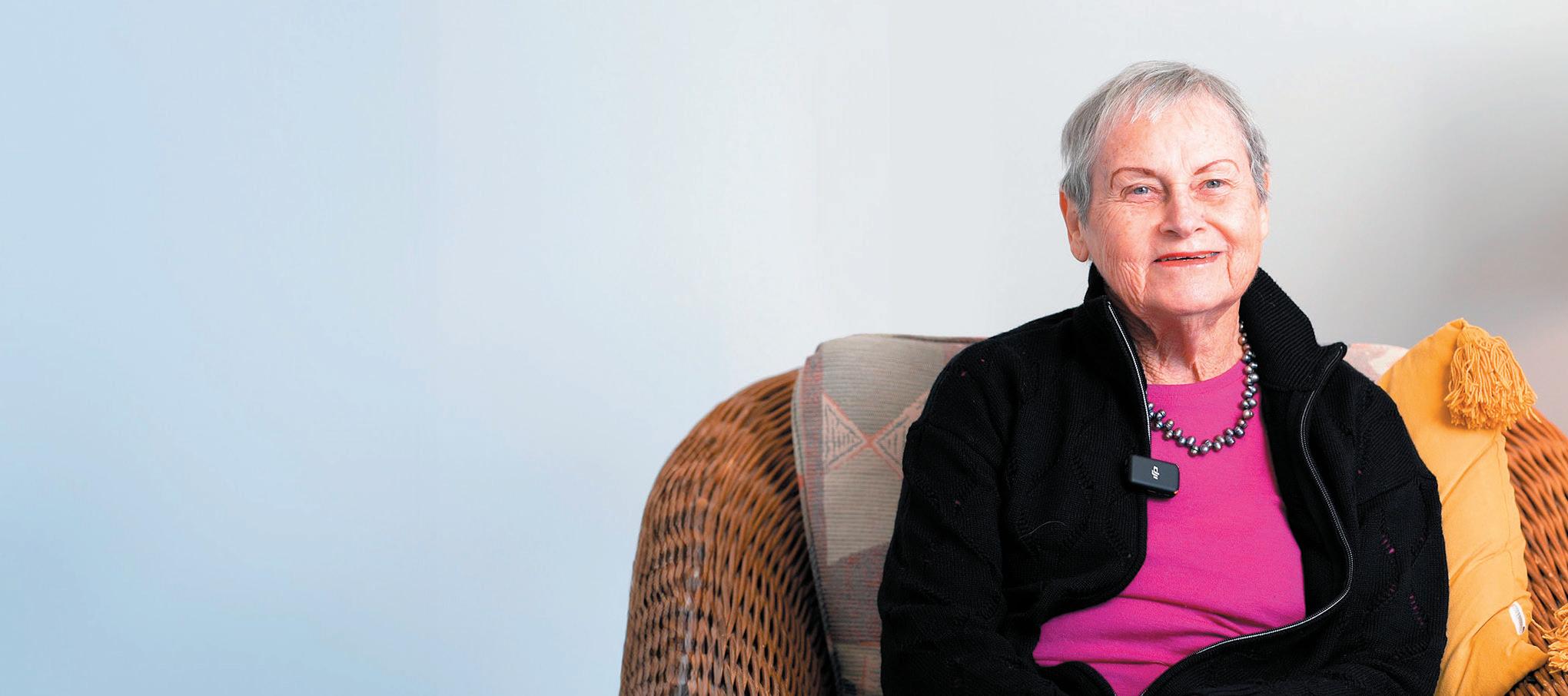
“We went on holiday in 2012 … came back and he got diagnosed with cancer. In October of 2012, he had his stomach, his spleen, and his oesophagus removed. He died a year later.”
Just six months after the heartbreaking loss of her husband, Beverley was diagnosed with breast cancer. She underwent a full mastectomy and remained cancer free for several years.
Then in December 2021 on her late husband’s birthday she was told the cancer had returned, this time as secondary breast cancer.
“I thought I was having heart attacks. And I was then diagnosed with cancer in the sternum and in my spine.”
Beverly was shocked but determined to fight it.
Her treatment included eight-hour sessions of chemotherapy where she’d read or knit to pass the time.
“It’s not an easy journey by any means. I’m still here. And I’m still happy.”
“I’m still on the treatment. Not the full chemo... but injections. At one point I lost my fingernails and toenails… had ulcers on my oesophagus, stomach, and intestines.
Knitting has become both therapy and purpose. Beverley is part of Busy Fingers, a community group based at St George’sc Presbyterian Church.
“We have up to 30 ladies and last year we gave 2,000 pieces away. A lot of it goes to the Cancer Society and the hospital. I knit because that helps the fingers move, and I go walking every morning to make the feet work. But it’s a double win… I am able to gift it to those in need.”
Throughout her cancer journey Beverley has received expert advice and comfort through a support nurse from the Cancer Society.
“The Cancer Society’s support has been a valuable part of my journey.
Having my community nurse, Naomi, check in on me regularly to see how I am and if there is anything I need has been lovely. I think its very important; it gives you a positive feeling knowing that someone is there.”
Inspired by the impact cancer has had in her own life and the support she received, Beverley has chosen to leave a gift in her Will to the Cancer Society. “My reason for doing that

is because of both my mum and husband… I’m passionate about trying to improve the research… things that can help other people. It’s not a big amount, but it’s an amount that will do something. Just something to say, I appreciate what you’ve done for me.
Every amount helps, whether it’s big or small, it makes a difference.”
Beverley’s generosity reflects her gratitude, hope and desire to make a real difference for others affected by cancer. By choosing to give a gift in her Will to the Cancer Society she is helping to ensure that other New Zealand families facing cancer can find the free care, support, and hope they need, as well as funding crucial cancer research.


Almond butter chocolate chip cookies are easy to make, wholesome, and delicious — plus, they only require 5 ingredients!
These naturally gluten-free treats are so satisfying, you won’t even miss the butter or flour.
• 1 large egg
• 1c almond butter
• 1 tsp Baking soda
• ½ tsp vanilla essence
• 1c chocolate chips
1. Preheat the oven to 180°C. In a medium-sized bowl, whisk the egg until well beaten. Add the almond butter and stir to combine, then mix in the brown sugar, baking soda, and vanilla extract. Stir everything together thoroughly — it might take some effort depending on the consistency of your almond butter. Finally, fold in the chocolate chips until evenly mixed.
Let the cookies cool on the baking sheet for 10 minutes before moving them to a wire rack to cool completely. Enjoy! Serves 12

2. Spoon out portions of the dough, roughly 1.5 tablespoons each, and place them on the prepared baking tray. Lightly flatten each mound with the back of a spoon. If the dough feels a bit oily from the almond butter, you can gently blot it with a paper towel. For an extra touch, press a few chocolate chips onto the top of each cookie if you like.
3. Bake for 10 minutes. The cookies will appear quite soft when you take them out — that’s perfectly normal! If you prefer a crispier texture, bake them for up to 12 minutes.
Serving suggestion:

By Jamie Quinn

This one-pot slow cooker soup combines pumpkin, carrot, and spinach for a nourishing, easy meal.
Simply toss in the ingredients and let the slow cooker do the work.
• 1kg pumpkin, cut into 2cm pieces
• 3-4 large carrots, cut into 2cm pieces
• 1 bag (120g) baby spinach
• 1 ½ tsp paprika
• 1 tbsp crushed garlic
• 1 tbsp Honey
• 250ml beef or vegetable stock
• Fresh or soy cream to taste
• Boiling water
• Salt and pepper to taste
1. Place the Pumpkin, Carrots and Spinach into slow cooker.
2. In a small bowl or measuring jug, mix together paprika, crushed garlic, honey and stock until dissolved. Pour over vegetables.
3 Top vegetables with boiling water, stop just before covered. Slow cook on low for approx. six hours.
4. With a stick blender, blend soup until smooth. Add salt, pepper and cream to taste.
Serving suggestion: Serve with warm bread. Enjoy!
Serves 4-6
This simple and speedy roasted cauliflower and chickpea salad is sure to impress.
Ideal for lunch or dinner! Enjoy it on its own or serve alongside your favourite protein.
• 1 whole cauliflower, cut into florets
• 1 400g can chickpeas, drained
• ½ red onion, thinly sliced
• 1/4c fresh parsley, roughly chopped
• 3 tbsp dried cranberries
• 1c greek yoghurt
• 2 tbsp fresh dill, chopped
• Olive oil

Serves 4
1. Preheat oven to 200°C fan bake. Arrange the cauliflower pieces on a roasting tray and drizzle generously with olive oil. Season with salt and pepper, then bake in the oven for 20–30 minutes, or until golden and tender. Remove and set aside to cool.
2. When the cauliflower has cooled to room temperature, place it in a large mixing bowl. Add the drained chickpeas, red onion, parsley, and cranberries, then toss thoroughly to combine.


3. Drizzle the salad with half of the lemon juice and zest, followed by a splash of olive oil. Season with salt and pepper to taste, toss to coat evenly, and transfer to a serving platter if desired.
4. For the yoghurt dressing, mix the remaining lemon juice and zest with the Greek yoghurt and half of the chopped dill. Season with salt and pepper to taste, then spoon over the salad.
Serving suggestion:
Garnish with remaining dill and a squeeze of lemon. Enjoy!
This simple chorizo and pea risotto is a no-stress dinner with big flavour.
Smoky chorizo and sweet peas create a delicious balance in every creamy, comforting bite — perfect for a satisfying weeknight dinner.
• 1 tbsp oil
• 200g chorizo, chopped
• 300g arborio rice
• 2 tbsp white wine vinegar
• 1.2l chicken stock, heated until simmering
• 200g frozen peas
• 60g grated parmesan, plus extra to serve
1. Heat the oil in a large frying pan, add the chorizo, and cook until it’s crisp and the oil has been released. Use a slotted spoon to remove a quarter of the chorizo and set it aside for topping.
2. Add the rice to the pan, stirring to coat it in the oil. Toast for a minute, then pour in the vinegar. Once the vinegar has evaporated, add a ladle of stock. Stir and allow it to absorb before adding more. Continue this process for about 20 minutes, until the rice is plump but still slightly firm in the centre.
3. Stir in the peas, parmesan, and the remaining stock. Mix well until the cheese has melted.
Serving suggestion:
Season with black pepper, then serve in bowls topped with the reserved crispy chorizo and a sprinkle of extra parmesan. Enjoy!

Butter by Asako Yuzuki, translated by Polly Barton
Part true crime, part love letter to fine dining, this gripping international bestseller is sure to make you hungry. The character-driven novel follows journalist Rika, whose interviews with passionate cook and convicted murderer Kaaji lead her on a journey of self-discovery. What starts as a conversation about butter evolves into a deeper exploration of identity and womanhood in modern society.
Kyle recommends
Atomic Habits by James Clear
For anyone hoping to develop or maintain healthy habits, this book is worth your time. It topped the New York Times best-seller list for 164 weeks after all. Habit researcher James Clear shares how it’s systems, not personal flaws, that shape habits. He explains that every habit follows a loop: cue, craving, response, reward. Focusing on small, consistent improvements — getting 1% better every day — leads to major change over time.

Jamie recommends
We Solve Murders by Richard Osman
Steve Wheeler is enjoying retired life. His days of adventure are over: adrenaline is daughter-in-law Amy’s business now. She’s currently on a remote island keeping world-famous author Rosie D’Antonio alive. Which was meant to be an easy job... Then a dead body, a bag of money, and a killer with their sights on Amy have her sending an SOS to the only person she trusts. A breakneck race around the world begins, but can Amy and Steve stay one step ahead of a lethal enemy?
Caro recommends Pillars of the Earth by Ken Follett
A spellbinding epic tale of ambition, anarchy, and absolute power set against the sprawling medieval canvas of twelfth-century England, The Pillars of the Earth is Ken Follett’s classic historical masterpiece. The historical novel, published in 1989, weaves together the lives of nobles, clergy, builders, and outcasts, exploring themes of ambition, love, power, and faith. It was made into an 8-part television miniseries in 2010 and a video game in 2017.

Ben recommends Poetry Aotearoa Yearbook 2025, edited by Tracey Slaughter
The Yearbook is essential reading for all New Zealand poetry fans. For the 2025 edition, editor Tracey Slaughter has once again hit the zeitgeist in her selection of 141 new poems from an exhaustive submission process. Another packed issue, #59 showcases the raw and the vital, including from this year’s featured poet, Mark Prisco, a blistering introduction from Slaughter herself, and excellent reviews of a crop of recent poetry books.








Cybercriminals continue to ruthlessly harness AI tools to spread malware through fake advertising on key social media platforms.
By Ben O’Connell

A new report from cybersecurity firm Mandiant unmasked a Vietnam-linked hacking group that was tricking people into downloading malicious software to harvest their data.
The widespread scam uses realistic-looking online ads that claim to promote popular AI platforms such as Canva, Dream Lab, Luma, and Kling AIs. A rotating set of websites and fake pages kept the scam alive.
Instead, users were redirected to fake websites designed to steal their personal information. A sample of 120 Facebook ads targeting European users alone had a combined reach of over 2.3 million people. More than ever, digital criminals are exploiting popular tech trends to deceive the public.
“Criminals go where the attention is,” said Yash Gupta, a senior manager at Mandiant. “Right now, that’s AI.”
Although this scam is no longer active, attackers continue to launch new ads and websites daily. The cat-and-mouse game sees scammers constantly adjust their tactics to avoid detection as cybersecurity experts catch on.
“These attackers are tapping into the public’s growing fascination with AI to carry out digital theft,” Gupta said. “A site that looks like an exciting new AI tool could actually be stealing your passwords, credit card numbers, or social media accounts.”
Victims include both solo users and employees of businesses across several industries. “This isn’t just a consumer issue.
“These stolen credentials can give attackers access to corporate networks, making it a risk for organisations too.”

The widespread scam uses realisticlooking online ads that claim to promote popular AI platforms such as Canva, Dream Lab, Luma, and Kling AIs. A rotating set of websites and fake pages kept the scam alive.
In the first three months of 2025, global growth in fake browser update scams increased by 17 times the previous quarter’s levels. There was a staggering 466% increase in phishing (digital impersonation) reports.
These findings come from a Gen Digital report, a global leader in digital freedom, powering Norton and Avast, among other trusted brands.
“Online threats are evolving at a startling pace,” said Siggi Stefnisson, Cyber Safety CTO at Gen. “Attackers are moving away from broad, indiscriminate campaigns to highly personalised, AIenhanced deception.
“Breached data and AI tools are giving cybercriminals just enough personal information and design sophistication to more easily manipulate people. That’s why we constantly evolve our cybersecurity solutions to be an interactive partner in fighting scams and to be one step ahead of cybercriminals.”
Data breaches are on the rise, with a 36% increase in the number of breaches faced by companies compared to last quarter. Individual breached records surged by more than 186%, revealing sensitive information such as passwords, emails, and credit card details.
More than a third of Kiwis admit to replying to emails, texts, and notifications while in the bathroom, 41% during a face-to-face conversation, and 28% while in a meeting or webinar, according to a new BNZ survey.
“And when we’re rushed or distracted like this, we make mistakes,” says BNZ Head of Fraud Operations, Margaret Miller. “Scammers prey on the fact that when we're rushed, distracted, or juggling multiple things, we’re more likely to click first and think later.”
BNZ now offers app-based authentication rather than texts, and an online banking lock that allows customers to disable online banking activity if they suspect a scam.
“While we all expect seamless digital experiences, we’ve learned that introducing small elements of friction at critical moments helps with focus and ultimately, keeps customers and their money safer,” says BNZ Head of Design, Donal Devlin.
“In practice, this means things like swapping button locations, adding brief pause notifications, or showing “pause and think” alerts to help customers stay focused when making higher-risk transactions or actions in their accounts.
“It’s about finding the right balance between convenience and security – adding just enough of a moment to think when the stakes are highest."
As scams become more sophisticated and personalised, staying alert online is more important than ever. Whether you're a business or an everyday user, taking small protective steps makes a big difference. Cybersecurity experts recommend adopting a few key habits.
See also: Scam fears keep older Kiwis offline, p34
Looking at vans? Start with one that’s built to last.

At East Coast Caravans, we’re here for the long haul - offering full servicing, expert advice, and after-sales support that lasts well beyond handover.






By Jonathon Taylor
One in four New Zealanders aged over 65 are now reluctant to go online due to fears of being scammed, according to new research from BNZ.
This figure has nearly doubled from 13% three years ago, highlighting growing unease among older adults. The trend is raising concerns about digital exclusion, especially as more everyday activities move online.
The research, released as part of Fraud Awareness Week, highlights a sharp difference in attitudes between age groups. While 25% of those over 65 express online hesitancy due to scam fears, only 10% of under-35s share the same concern. However, the findings show that older people are not necessarily more likely to fall victim to scams. This suggests that fear — rather than actual risk — may be discouraging older New Zealanders from using digital services.
Ashley Kai Fong, former BNZ’s Head of Financial Crime, says this trend presents real challenges in today’s connected world.
“When older people avoid the internet because of fear, they miss out on valuable things like easier banking and staying in touch with loved ones through video calls,” he says. “As more essential services move online, we must ensure everyone feels confident taking part.”
There is a bright spot: the research shows that 96% of New Zealanders over 65 have recently seen information on how to avoid scams.
“That’s encouraging,” says Kai Fong. “But it’s important that this information builds confidence, not fear.”
“Our aim isn’t to discourage technology use, but to help people use it safely and with confidence. With so much now happening online, from banking to government services, staying connected is more important than ever.”
To support this, BNZ’s Scam Savvy programme offers practical advice and updates on new scam tactics, helping customers protect themselves and use digital tools more confidently.
"Digital inclusion is about more than just having internet access - it's about having the confidence to use it safely. At BNZ, we’re doing our part to better educate New Zealanders about the risk of scams, what to look out for and how to keep yourself safer online," says Kai Fong.
Be cautious with unsolicited messages
• Don’t click on links or open attachments from unexpected emails or texts
• Never share personal information (like passwords or bank details) via email, text or phone unless you’re 100% sure who you’re dealing with.
• Create long passwords using a mix of letters, numbers, and symbols
• Use different passwords for different accounts
• Consider using a password manager to keep track securely.
• Add an extra layer of security by turning on 2FA for important accounts like email and banking
• This usually means entering a code sent to your phone or using an app after entering your password.
• Regularly update your computer, phone, and apps to patch security vulnerabilities scammers might exploit
• Install reputable antivirus software and run regular scans.
• Be suspicious of messages that create urgency, ask for money, or sound too good to be true
• Scammers often pretend to be from banks, government agencies, or family members in trouble — if in doubt, contact them through official channels.
We are your local garden maintenance specialists. We provide a wide range of gardening services to help you bring out the very best in your outdoor space.
As a Kiwi-owned business, we understand the special relationship New Zealanders have with the outdoors. We aim to strengthen this relationship, drawing on our horticultural expertise to create healthy, beautiful and sustainable residential gardens throughout Central and East Auckland.
Every garden is unique, which is exactly why all of our gardening services are tailored to your specific needs and budget. Whether you’re looking for regular maintenance or a one-off service, we’re proud to provide a landscape care solution that works for you.







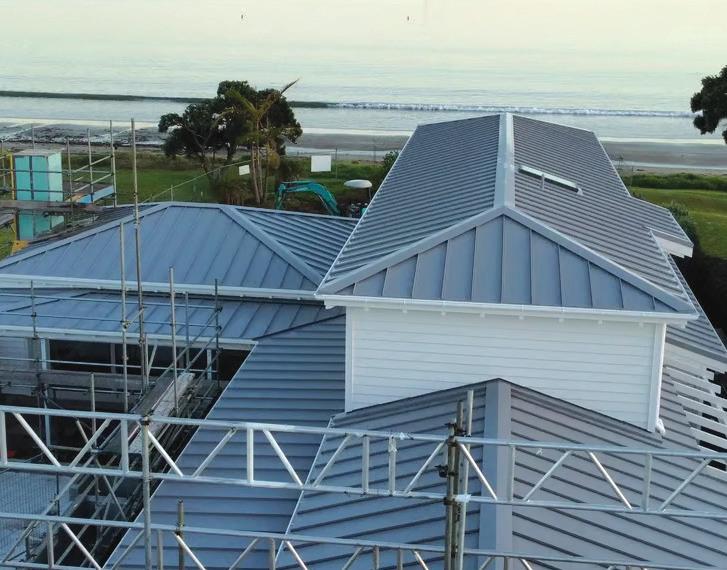

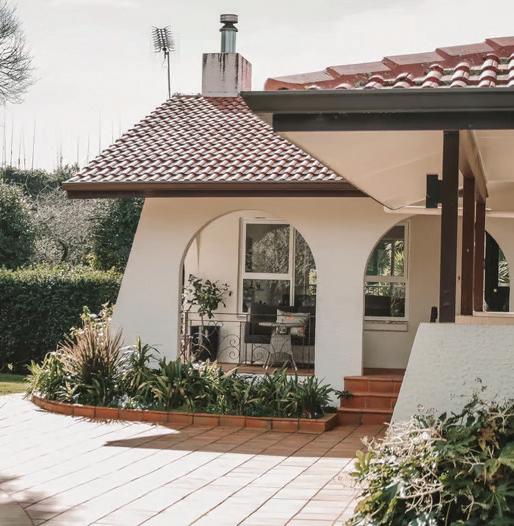

Findlay Residential is a Rodney-based building company that can help you with everything from a renovation or extension right through to a brand-new house. We undertake all types of residential construction for clients in Rodney and the North Shore of Auckland.
• New Builds • Renovations
By Ben O’Connell
For many Kiwis, influenza has long been the winter illness to watch out for.
Flu season runs from May to October, and each year, thousands of New Zealanders fall ill. But since the 2020 COVID-19 pandemic, respiratory viruses come with another layer of risk, especially for those over 50. Is the flu worse than COVID?
Seasonal influenza is caused by a group of rapidly mutating viruses that spread easily through coughs, sneezes, and touch. For most healthy adults, the flu means a miserable week of fever, aches, cough and fatigue. Yet for those aged 50 and older, the risk of complications starts to rise. Pneumonia, bronchitis, and flareups of chronic conditions like asthma, diabetes, or heart disease are far more common.
Hospitalisation rates climb with age, and recovery times are often longer. The Ministry of Health recommends that everyone six months and older get the flu vaccine annually, but in practice, access varies.
In Aotearoa, the vaccine is free for people aged 65 and over, for Māori and Pasifika aged 55+, and for those with long-term health conditions. Others, including many healthy people in their 50s, must pay privately, something that may discourage uptake.
In contrast, COVID-19 has consistently been more severe than the flu across all age groups, and the risks become pronounced from age 50. Even without underlying conditions, people in their 50s are significantly more likely to need hospital care compared with younger adults. International and local data show the odds of hospitalisation rise steeply from this age, and the risk of death is several times higher than for seasonal flu.
Unlike influenza, COVID-19 also carries a lingering shadow: long COVID. Symptoms such as chronic fatigue, breathlessness, and brain fog can persist for months after infection. People aged 50 and over are at greater risk of these long-term complications, which can affect quality of life and the ability to work.
While both viruses can make you seriously unwell, the evidence is clear: COVID-19 carries heavier consequences in this age group.

The government has recognised this threat. COVID-19 vaccines are free for everyone aged five and older, with boosters especially recommended for those aged 50 and older due to waning immunity and higher risk. Vaccination reduces the likelihood of severe illness and helps curb the virus’s broader impact on health services.
Both illnesses are preventable through immunisation, and importantly, you can get the flu and COVID-19 vaccines at the same time. Health New Zealand encourages co-administration, with one injection in each arm. For over-50s, the benefit is clear: dual protection against two viruses that are increasingly cocirculating each winter.
Yet there is a gap in accessibility. While COVID-19 shots are universally free, flu vaccines are not. A 50-year-old without underlying health conditions or Māori/Pasifika heritage must usually pay between $25 and $45 at a GP or pharmacy. Public health experts argue that wider funding would boost uptake and reduce the annual burden of flu-related hospitalisations in this working-age population.
The Ministry of Health’s updated New Zealand Pandemic Plan, published in 2024, explicitly includes both influenza and coronaviruses. It stresses the need for ongoing vigilance: flu pandemics remain a future threat, and COVID-19 continues to circulate in unpredictable waves. For those aged 50 and older, the takeaway is not to treat these illnesses as interchangeable, but to recognise the distinct risks each carries.
So, which is worse for New Zealanders over 50? Influenza is far from harmless, but COVID-19 is the greater threat, more likely to cause hospitalisation, death, and long-term health issues. The best defence is vaccination against both. For anyone approaching or past 50, the message is simple: don’t leave it to chance. A jab in each arm could mean the difference between a short recovery at home and a long stay in hospital.
In contrast, COVID-19 has consistently been more severe than the flu across all age groups






By Ben O’Connell
The dad bod. A term used to describe the male physique that is neither heavily muscular nor particularly lean. It’s the softer midsection, perhaps hiding a past life as a gym rat or rugby captain.
It suggests a man who balances fitness with a see-food diet, someone who climbs up mountains and then downs beer and pizza without guilt. The term references fathers, but it isn’t exclusive to them. Today, the dad bod symbolises a balanced lifestyle, moderation, warmth. Unlike the chiselled, moviestar ideal, the dad bod is more realistic. And it’s nothing to be ashamed of. In fact, it should be celebrated.
Since 2015, the public has been fascinated by the dad bod. Its zeitgeist rise coincided with growing backlash against unattainable male body ideals of leanness, muscles, and a sometimes toxic, alpha-coded discipline. By normalising softer, everyday male bodies, the trend encourages a nuanced conversation about body image and attractiveness. Surveys suggest that many women find the dad bod appealing, as it signals approachability, a sense of confidence without perfection, and alignment with a lifestyle that balances enjoyment and health.
From a health perspective, a dad bod does not automatically indicate poor wellness. Excess body fat, particularly visceral fat around the abdomen, carries risks such as cardiovascular disease, type 2 diabetes, high blood pressure, and some cancers. Men with a dad bod may appear outwardly healthy, but regular medical checks for blood pressure, cholesterol, and blood sugar levels are still worthwhile. The fact is, lifestyle factors such as balanced nutrition, regular physical activity, stress management, and regular check-ups are more important indicators of long-term health than appearance alone.
Body image concerns also affect men, particularly older men, though they are often overlooked. Societal pressures for men to maintain a lean, muscular frame can lead to stress, low self-esteem, or avoidance of healthy habits. The dad bod reflects a life where family, work, and leisure sometimes outweigh strict fitness routines, yet embracing it need not compromise wellbeing.

There is also a biological basis for the dad bod. Men who become fathers often experience hormonal shifts, including lower testosterone and higher oxytocin, promoting caregiving and emotional presence. These changes can alter muscle mass and fat distribution. From an evolutionary perspective, extra weight may have provided energy reserves during times of stress. What appears as softness can therefore reflect adaptation rather than decline.
Hollywood and social media continue to both celebrate and parody the dad bod. Its acceptance reflects a broader cultural shift toward body positivity for men, though critics note a double standard: women’s post-pregnancy or midlife bodies remain scrutinised far more heavily. Humour often accompanies the dad bod label, allowing men to own their appearance without shame, akin to how women have reclaimed terms like mom bod.
Ultimately, the dad bod is less about a specific shape and more about what it represents: balance, confidence, and a life fully lived. It reminds us that health and attractiveness come in many forms, that strength can be measured in care, connection, and selfacceptance as much as muscle tone. By celebrating the dad bod, society challenges narrow definitions of masculinity and opens the door for men to embrace themselves as they are, without guilt, shame, or the pressure to conform. Whether six-pack or soft around the edges, the most appealing quality remains the same: confidence paired with a genuine enjoyment of life.

The old saying ‘use it or lose it’ applies as equally to mental acuity as it does to physical wellbeing, and more so as we age.
With people progressively living longer lives, it is increasingly important to look after our mental health. So here are some activities for the mind… brain food for improving your state of mind.
These words may go horizontally, vertically, diagonally, not backwards. The remaining letters will spell one more hidden geography term.
HIDDEN:
ANSWERS:
RULES: Sudoku rules are simple. A 9×9 square must be filled in with numbers from 1-9 with no repeated numbers in each line, horizontally or vertically.
To challenge you more, there are 3×3 squares marked out in the grid, and each of these squares can't have any repeat numbers either.
Based in Kumeu, New Zealand, we specialize in building tiny homes, granny flats and holiday retreats that redefine comfort, functionality, and style.
We can build onsite or offsite nationwide or International.
With a focus on quality craftsmanship, attention to detail, and personalized service, we ensure that every project reflects the unique needs and preferences of our clients. From initial design concepts to final touches, we guide you through every step of the construction process, making it seamless and stress-free.
Experience the difference with Small Builds –where small spaces lead to big possibilities.
At Small Builds, we stand behind our craftmanship. From the foundation to the finishing touches, we ensure the highest standards of quality in every aspect of our work. Your satisfaction is our priority, and we are committed to delivering excellence in every project we undertake.

Whether it's providing extra accommodation for loved ones, crafting a cozy retreat away from the hustle and bustle, or offering a smart investment opportunity, we're here to bring your vision to life.
Council and Building Consents
We look after all council requirements if required.
Eco-Friendly Designs
We prioritize eco-friendly design, incorporating sustainable materials and practices to create healthier homes and a greener future.
Electrical & Plumbing
We handle all aspects of electrical and plumbing, guaranteeing top-tier solutions for seamless functionality and safety across your entire project.
Call us for a no obligation quote or visit us at our showroom in Kumeu Auckland


Our fully customizable tiny homes are built specifically to suit your needs, wants & budget.
Whether you're seeking a cozy retreat in the countryside, a versatile backyard studio, air b and b for secondary income or a granny flat for family, our tiny homes offer endless possiblities.
We collaborate closely with each client, ensuring that every aspect of their tiny home aligns seamlessly with their vision and budgetary constraints. With options available for every budget.


Different design options available.
Options to suit your budget.
Follow current legislation.
Builders guarantee.
Money locked in and secure.
Solar power options.
Screw piles for foundations or timber piles.
Lodging with council processing if you need.
Get in touch today for a free quote, no commitments necessary.
m Paul 021378277 k info@smallbuilds.co.nz
www.smallbuilds.co.nz
Options to build on site or off site and delivery.(delivery costs tbc)
Reading quickly is a valuable skill, but one must read fast and comprehend well to achieve it.
Time how fast you can read the passage below, then answer the questions below to test your comprehension to see how well you can speed read!
Speed reading is not just racing through a passage. Once honed, it becomes a powerful technique that, when combined with effective comprehension strategies, can significantly enhance your cognitive abilities — not only in reading but also in learning other new skills. At its core, speed reading involves training your eyes and brain to process information more efficiently, minimising habits like subvocalisation — where you “say” words in your mind as you read. By practising methods such as using a pointer or finger to guide your eyes, expanding your peripheral vision, and chunking words together, you can increase your reading speed while still understanding the material and even enjoying the process more.
Comprehension is the critical companion to speed. Without it, reading quickly becomes meaningless. Focus on active reading strategies: preview the text by skimming headings and subheadings, ask yourself questions about the content before diving in, and summarise key points after each section. This improves recall while also encouraging deeper, critical thinking. This approach keeps your brain engaged and helps you retain more information. Over time, these habits strengthen your cognitive abilities, making it easier to process complex ideas and remember important details.
Combining speed reading with comprehension exercises creates a virtuous cycle for your brain. As you challenge yourself to read faster and understand more, your brain adapts by forming new neural connections. These adaptations support lifelong learning and mental resilience. It’s like a workout for your mind, just as physical exercise builds muscle, reading efficiently builds cognitive strength. Studies suggest that people who regularly practice speed reading and comprehension techniques experience improved memory, sharper focus, and enhanced problem-solving skills.

By Ben O’Connell
Whether you’re a student, professional, or lifelong learner, these skills empower you to absorb vast amounts of information quickly and effectively. By incorporating these strategies into your daily routine, you can unlock your brain’s full potential, remain mentally agile, and keep pace with the ever-growing demands of the information age.
Answer these true or false statements to ensure you understood the passage.
1. Skimming headings is a bad speed-reading strategy
2. Subvocalisation is a habit where you mentally say words as you read
3. The passage compares speed-reading to racing a speedy car
4. Memory, focus, and problem-solving improve with speed-reading skills
5. The passage describes speed-reading as ‘valuable’ for the brain.
The odd-numbered statements are false, whereas the evennumbered statements are true. If you answered all five questions correctly and took one minute or less to read the passage, you are an excellent speed reader. The passage has 319 words, but the average reader reads about 240 words per minute. If you took over three minutes to read the passage, its advice might be worthwhile to you! Speed-reading is a valuable skill, but ultimately, reading is to be enjoyed at your own pace.
For six decades, Dimond® Roofing has played a leading role in shaping New Zealand’s roofing and cladding industry, transforming both residential and commercial communities through innovative solutions and a steadfast commitment to quality. Since our inception, our mission has remained clear: to deliver exceptional products and services that not only protect and enhance buildings, but also foster lasting relationships within the communities we serve.
Our reputation as an industry leader is built on a steadfast dedication to quality. Every Dimond roof is manufactured to the highest standards, with strict adherence to AS/NZS 2728,
the NZMRM Code of Practice, and other relevant industry benchmarks. This ensures that every project we undertake is built to last—delivering unmatched protection, performance, and peace of mind for our customers.
At Dimond® Roofing, we believe that innovation drives excellence. Our team of industry experts continually seeks out new technologies and sustainable practices, ensuring that our solutions remain at the fore front. Customer satisfaction is at the heart of everything we do, and our enduring presence in the industry is a testament to the trust our clients place in us.
Environmental responsibility is woven into the fabric of Dimond® Roofing. We are proud to have achieved the prestigious Global GreenTag™ GreenRate™ “Level A” Certification, highlighting our commitment to reducing our carbon footprint and supporting green building initiatives.
As we celebrate 60 years of excellence, Dimond® Roofing remains dedicated to delivering trusted and quality cladding and roofing solutions with sustainable practices—today, and for many years to come.

Since 2004, Crown Self Storage has been offering affordable storage facilities in Auckland.
Now, they have over 900 individual storage units with a variety of sizes to suit your needs. They offer the best prices for self-storage in the Auckland Central district without compromising on quality and service.
With excellent security featuring 24-hour CCTV cameras, security fencing, security controls and monitored alarms, you don’t need to worry about your stored items wandering off. Once a storage unit is hired, you lock the unit with your own padlock and keep the keys. No one else will have access to the storage unit unless authorised by yourself. Access to the units is available from 6am to 7:50pm, seven days a week.
Crown Self Storage prices and sizes the unit requirements by the contents of what you need to store. For example, if you’re storing furniture and other belongings from a one-bedroom flat, the team have calculated you’d need an eight cubic metre unit costing $145 a month. They also offer smaller units for backpackers’ storage for
a dollar a day per item. Crown Self Storage can also store cars, vans, trailers, boats, campervans and trucks which ranges from $210 to $310 a month.
To make your self-storing that little bit easier, Crown Self Storage offers trolleys on site to assist with moving and a courtesy trailer to assist you in your initial move in. Your items are housed in their individual units within a large warehouse. Each unit is made of steel and are dry and protected from the elements with easy accessibility. Two undercover loading bays ensure that you can move in or out of storage, regardless of weather conditions.
For more information and to discuss prices, visit their website or give them a call.
Crown Self Storage 249 Neilson Street, Onehunga, Auckland 09 6222 333 info@crownselfstorage.co.nz www.crownselfstorage.co.nz


The Property Council, whose members are some of New Zealand’s largest property developers, owners and investors, has come out in support of the government’s Build to Rent tax exemption boost.
Property Council New Zealand chief executive, Leonie Freeman, says the initiative could mark a key turning point towards unlocking the potential of Build to Rent.
“Our members share the government’s view that enabling Build to Rent will provide warm, dry rental homes that offer Kiwis long-term security of tenure.
“It is encouraging to see that the government has listened to our sector and acknowledged Build to Rent as a unique property asset class.
“The government’s announcement is a major step towards boosting New Zealand’s emerging Build to Rent sector.
“Build to Rent will transform the experience of renting in New Zealand.
“Property Council research shows that our members stand poised to deliver over 25,000 Build to Rent homes in the next decade, with the right policy settings.
“Build to Rent refers to multi-unit residential developments, typically located in city centres within walking distance of key transport links.
“These developments are professionally managed, with brilliant amenities available onsite, offering residents bespoke lifestyle options for as long as they want to stay.
“By enabling Build to Rent, the property sector will be able to deliver thousands of new high-quality, high-density rental houses, supporting New Zealand’s urban intensification and climate ambitions.
“Kiwis will hopefully soon have many choices to access to a warm, dry and climate friendly Build to Rent home.
“Over the past 18 months, the Property Council has been working closely with the government to highlight the untapped potential of Build to Rent and explain the legislative actions required to enable it.
“As part of this, we have collaboratively resolved the unintended consequences of last year’s interest deductibility changes.
“While the announcement has been a fantastic step in the right direction, there are a few remaining speedbumps to truly unlock the concept.
“For Build to Rent to flourish, access to large institutional investment via the overseas investment act and commercial depreciation is also required.
“The Property Council looks forward to continuing our engagement with the government to support the roll out of the world’s fastest growing residential sector in Aotearoa.”

Property Council research shows that our members stand poised to deliver over 25,000 Build to Rent homes in the next decade, with the right policy settings.
Don’t spend valuable time worrying about your rental property - leave that to the experienced team at Keen on Rentals. We’re here to help!
A personalised approach for Landlords and Tenants.
Effective property management is founded on good relationships, and we have built up a reputation for being Auckland’s trusted rental property managers for over 13 years.
We specialise in looking after investment properties and apartments in Auckland’s CBD and central suburbs, along with new build high-density complexes and stand-alone homes throughout Auckland.

We know from experience that matching the right tenant with the right property and keeping that relationship in good shape is what works best for everyone. Tenants have a great home to enjoy, while owners get the best return for their investment. That’s why we’re rental property matchmakers.
Call us now to find out about our “No Surprises” fees.
Level 7/2 Kitchener Street, Auckland CBD 1010



If you’re growing older in New Zealand, your SuperGold Card is more than just a handy discount card, as it can also help you access valuable health benefits.
Designed to support older New Zealanders, the SuperGold Card offers savings on healthcare services, making it easier to maintain your well-being without straining your budget.
Many pharmacies, audiologists, optometrists, and dental clinics across New Zealand offer discounts to SuperGold Card holders. You can enjoy savings on prescriptions, eye examinations, hearing tests, and even dental check-ups. It’s always a good idea to check with your local healthcare provider to see if they accept the card.
If you’re interested in natural or alternative treatments like acupuncture, physiotherapy, or chiropractic care, some practitioners offer SuperGold Card discounts. It’s worth checking with local providers to see what’s available in your area. Look for the gold logo in shop windows or at checkout counters as well. Clothing shops and department stores often provide related discounts.
Numerous cafes, bakeries, and restaurants across New Zealand offer senior discounts, with some providing discounts of up to 1015% off meals or drinks. Fast food chains may also offer discounted meal combos for seniors. When booking a table or ordering at the counter, simply ask if there’s a senior deal available. Look out for special deals on certain days of the week, such as discounted lunch menus or two-for-one offers.
To find out which businesses and healthcare providers accept the SuperGold Card, visit supergold.govt.nz or ask at your local health centre. Keep your card handy and always check for available discounts: it’s a simple way to take care of your health while saving money.

By Mike Jerome Infante
SuperGold are not the only discounts on offer. These include free off-peak public transport, discounted InterCity and KiwiRail fares, cheaper power through the Winter Energy Payment and provider deals, and health savings via the Community Services Card.
Some entertainment venues, such as cinemas and museums, often provide concession rates. Local councils may provide rebates and support services, such as Meals on Wheels and home help, which are available. Seniors can also join Grey Power for extra perks. Always ask businesses if they offer a senior discount — it pays to check!
Your home is often your largest personal asset, so selling it can be both exciting and stressful at the same time.
That’s why having an agent that you can trust to help you achieve the best price and conditions possible for your home – all while being transparent and ensuring all parties are comfortable and aware of the processes, will make a big difference.
Certain attributes differentiate a great agent from a good agent. We recommend that you look for agents who demonstrate a great deal of professionalism, local knowledge and have a good reputation.
Look for someone who understands the kind of people who will be interested in your home. This will help with the marketing of your home and communicating the benefits of your property to potential buyers.
Local agents often have a network of potential buyers that they have been working with or regularly communicate with, who are ready and able to provide the best price for your home.
Great real estate agents are well connected, therefore asking family and friends if they know an agent they would recommend is a great start; referrals are often the best way to find an agent with a proven track-record, and not just someone who knows how to say the right things at the right time.
When asking for recommendations, remember to ask what factors their recommendation is based on. Did they get the level of communication they wanted? Did they think the agent used the marketing spend effectively? Did they manage any challenges through the process well?


Great real estate agents are well connected, therefore asking family and friends if they know an agent they would recommend is a great start; referrals are often the best way to find an agent with a proven track-record, and not just someone who knows how to say the right things at the right time.
Agents are usually more than happy to come to your property, share their knowledge and talk you through your options for selling. We recommend meeting a few agents before you choose who to work with.
Try visiting open homes they are hosting to understand how they present their vendor’s property. This will help you get a feel for how they will work to get the best for your property.
Take a look online and see how agents are using social media and digital marketing to increase coverage for the properties they are selling, and therefore see what you could expect for your home. Many agents will also use advanced technology to help market and sell your home, which can often reach a broader audience, for example:
• Virtual Reality tours or 3D walkthroughs are one of the options that increase the accessibility of an open home to a wider range of potential purchasers in the first instance, particularly out of town buyers
• Augmented Reality is another option that can help potential purchasers rework the layout of furniture in the home, so they can better picture themselves and their belongings in the home.
Try not to select an agent based solely on their commission fee, but it is important to understand what the fees are. While these do vary by agency, our advice is to choose an agent you trust and whose previous work gives you confidence.
Great agents can achieve a better price for your property by understanding the best strategies according to different market conditions.
At the end of the day, the person you choose is going to be a big part of your life while you sell your home, so it is important that you feel comfortable with them and that you can trust them to get the job done.
Overcoming obstacles is all in a day’s work for consummate over-achiever Chris Head. Proud to be part of the Bayleys’ residential sales team and determined to deliver his signature tenacity, fresh perspective, and unwavering commitment to results.
Consistently ranking on top of the leaderboard at the country’s oldest and most prestigious dealership in the past, he is certainly no stranger to thriving in a competitive market.
Choosing to focus on doing the simple things well and consistently, clients will tell you Chris is a man that always calls back. He does what he says he will do and approaches each task with a strategy and no-nonsense approach to the facts.
Equal parts affable and intelligent, Chris knows that each property is as unique as its owners and he strives to createbespoke marketing plans and tailor-made solutions while building confidence and delivering results.
Hooked at the possibilities that property offers, Chris is passionate about the northwest lifestyle. A cultural melting pot that maintains an innate sense of New Zealandness by blending lifestyle blocks and farmland with urban design and world-class amenities, he is truly enthusiastic about this perfect slice of the city.
Careful to stay abreast of local developments, Chris pairs specific market knowledge with a strong business acumen encompassing zoning, legislative and economic progress to ensure his clients are well-positioned to make the big… and right decisions when it comes time to sell.
Achievements:
• BRE Residential Super Achiever 2022/23







My genuine, client-focused approach means i’m with you every step of the way. From preparation to settlement, i work with meticulous attention to detail to ensure your property is sold smoothly and professionally.

My approach to real estate is built on trust, patience, and genuine care. I understand that selling a home, especially later in life, is more than just a transaction — it’s an important chapter filled with memories and meaning.
With many years of experience selling all types of properties across Auckland, I take the time to listen, communicate clearly, and guide you gently through every step of the process.
I can also take the stress out of the practical details by working alongside you and your family, helping with repairs, gardening, cleaning, and even relocation support — ensuring everything is project managed with care and respect.
As an independent agent, I focus on quality over quantity. Backed by the trusted Ray White network, I offer both personal attention and the strength of a leading brand, giving you peace of mind from start to finish no matter how complex or sensitive the transaction may be.
I love working with older people and take my duty of care to heart. With both compassion and careful attention to detail, I’ll guide you through the sale of your most treasured asset.







By Gillian Boyes, Chief Executive, Funeral Directors Association of New Zealand
At many funerals these days, you’ll see a photo tribute or hear specially chosen music that reflects the person who has died.
But have you ever thought about the photos or music you’d want, or want for a loved one? Preparing these details can be a gentle way of beginning the planning for a final farewell and has the added bonus of helping you re-live many happy memories as you begin the sorting process.
If you’ve been wondering how to start here’s some more ideas to talk about with your family.
Think about where you’d like your funeral to take place - Chapels and churches are still popular but increasingly people are opting for highly personalised approaches.
Has a certain sport or interest been a big part of your life? Perhaps your funeral could be at your sports club or the club rooms of your interest group.
Love your garden, the beach, your local park? You could have a special ceremony there (your funeral director will let you know of any local council requirements).
Your cultural traditions may dictate the venue. Funeral directors can work within those requirements too.
Your venue might dictate whether you have a funeral (with the body present) or a memorial (with ashes). Both options offer the opportunity for your family and friends to gather and remember which is a key part of their grieving process.
While there are other options too such as burial at sea or donating your body to science, burial on land and cremation remain the most popular choices for most New Zealanders.
If you prefer a burial, some councils allow you to pre-purchase a burial plot which can help you avoid ever increasing cemetery charges.

Consider your casket choice - Caskets these days come in the widest possible varieties. Prefer something simple? An MDF, or plain casket your family can decorate themselves might be for you.
Want to think sustainably? Solid wood options might befit you, or consider a felted wool or wicket casket which might also reflect a love of nature. Shrouds are another option particularly for natural burials. Casket makers can also offer bespoke options including beautifully carved coffins and couches, or special wraps with your favourite image or colour. Yes we’ve even seen a donut themed casket.
Many people find it reassuring to know a deceased body is treated with the highest respect and care at a funeral home. You might have other questions you’d love to ask, so look out for local open days at funeral homes. People find these absolutely fascinating and taking away some of the mysteries about what goes on can also take away the fear.
Get your paperwork in order - A really important gift you can give to your family is having your paperwork in one place. This includes your will but also details that’ll help them close off bank accounts, utilities and even social media. Make sure that if you’ve organised a funeral pre-payment that details of that are included with that paperwork. We’ve sometimes had to follow-up and refund families who had no idea mum or dad had already paid.
A final paperwork tip is to make sure your immediate next-ofkin details are included with your important papers – these are important for death registration.
with
for them - Remember that while you might not want a fuss, your funeral is a time for your family and friends to grieve for you. Coming together, hugging, looking at those wonderful photos or listening to the songs you loved will help them as they come to terms with living without you.
Writing down what you decide, or asking your local funeral home to capture the details in their system so they don’t get mislaid will mean that when the time comes, your special people are left with peace, not decisions.

Tranquil grounds, tree-lined drives, manicured gardens and steeped in history, Purewa is a place of peace and support in the hardest of times.

Beautiful spaces, dignified services, support when you need it most
Situated in the Pourewa Valley in Auckland’s eastern suburbs, Purewa is only a 15-minute drive to the city’s central business district and is also connected by rail links and the shared walking and cycling pathway connecting the eastern suburbs to the city centre. It is a haven of peace and calm for the community which is welcome to enjoy the space for reflection, exercise, education, and conservation. Memorial service chapels, reception lounges, walks, gardens and open expanses –maintained to the highest standards.

Purewa offers the widest range of traditional and innovative ways of memorialising your love one as the Purewa team brings a wealth of experience and empathy at your most difficult time.
• Two newly refurbished chapels
• Live streaming worldwide
• Two reception lounges
• Full service premium catering by Gattings
We are here for you whenever you need us. See our latest facilities. Meet our professional, caring staff. Purewa – part of our community since 1889.
4a Parsons Road, Meadownbank, Auckland 1072 09 528 5599 | enquiries@purewa.co.nz | www.purewa.co.nz








